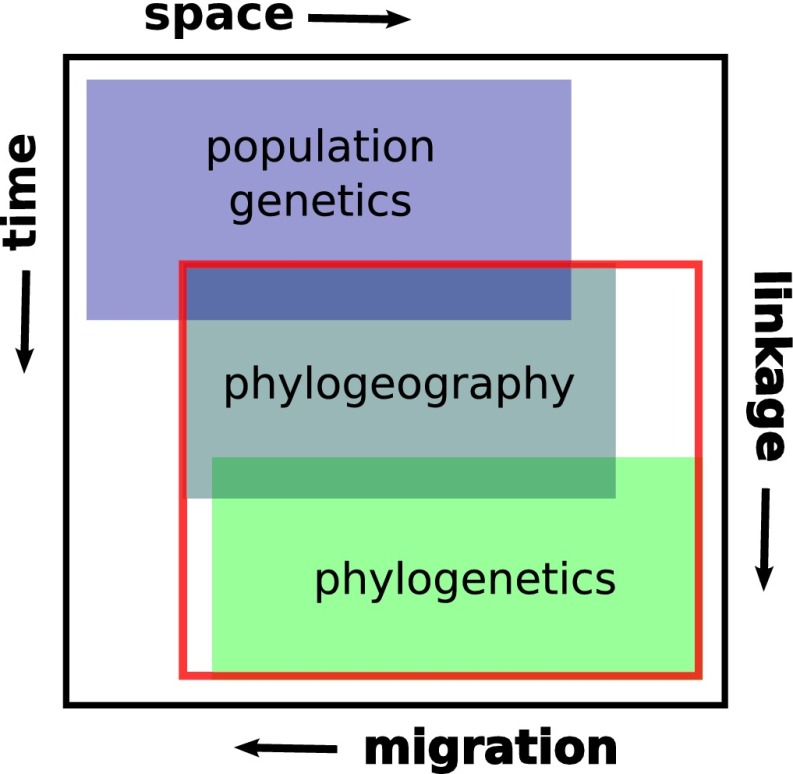Fig. 1.
Diagram classifying the disciplines of population genetics, phylogeography, and phylogenetics. Traditionally, we think of these respective disciplines as being concerned with variation among organisms arising over short, intermediate, and long temporal (and often spatial) scales. Increasingly, with large quantities of data, there are opportunities to classify studies according to the way different processes are inferred to have shaped datasets. For example, it is likely that migration among populations is common in “population genetics” datasets and rarer in phylogenetics. Similarly, recombination is likely to reduce the detectable effects of linkage in population genetic datasets, such that the effects of linkage likely lead to larger haplotype blocks in studies at the “phylogeographic” scale. In this way, different studies might form, and next-generation methods might facilitate, a continuum from population genetics to phylogenetics. In this review, we focus on studies spanning the part of this continuum spanning phylogeography and shallow phylogenetics, indicated by the red box.

